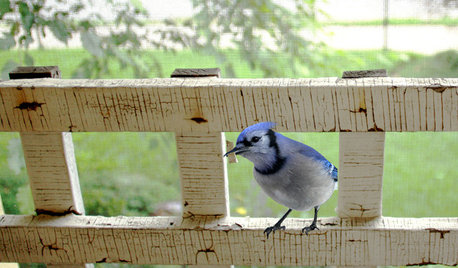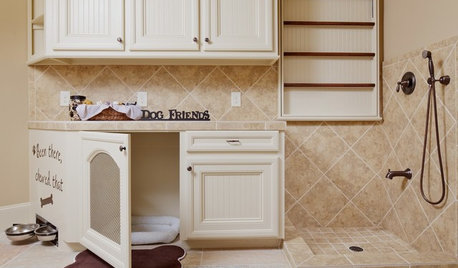What worm feeding behavior is normal?
Sheppy2
13 years ago
Related Stories

HOME TECHTo Feed and Protect: Care for Your Pet From Afar With New Devices
You might miss the nuzzles, but your dog or cat won't miss food, water or monitoring with these high-tech feeders and cameras
Full Story
HEALTHY HOMEHow to Childproof Your Home: A Grandmother’s Wisdom
Change kids’ behaviors, not your entire house, to keep the designs you like and prepare children for reality
Full Story
PETSSo You're Thinking About Getting a Dog
Prepare yourself for the realities of training, cost and the impact that lovable pooch might have on your house
Full Story
GARDENING FOR BIRDSBackyard Birds: Meet Some Clever and Curious Jays
Boisterous jays provide plenty of backyard bird-watching in winter. Here’s how to identify all the varieties and welcome them into your yard
Full Story
PETSThe Crate Conundrum: A Safe Place for Your Pooch
Get ideas for a comfy den for your dog that works well with your space too
Full Story
GARDENING GUIDESSmall Carpenter Bees Are Looking for a Home in Your Plant Stems
Provide flowers and nesting sites in your garden for this beautiful, tiny, metallic blue wild bee — your plants will thank you
Full Story
GARDENING FOR BIRDSWhat to Know About Birds Nesting in Your Yard
Learn how to observe, record data and help ornithologists with NestWatch’s citizen science project understand bird trends
Full Story
GARDENING GUIDES6 Plants That Beat Butterfly Bush for the Wildlife Draw
It's invasive, a nonnative and a poor insect magnet. Check out these better alternatives to butterfly bush in the garden
Full Story
GARDENING GUIDESLush, Foodie Abundance in a Small Urban Garden
This modest backyard garden provides its owner with fruit and vegetables all year round, thanks to an innovative low-maintenance approach
Full Story
LIFETell Us: Do You Know How to Live With Your Parents?
If you've tried multigenerational living under one roof, we'd love to hear the details
Full StoryMore Discussions






11otis
joe.jr317
Related Professionals
Londonderry Landscape Architects & Landscape Designers · Middle River Landscape Architects & Landscape Designers · South Elgin Landscape Architects & Landscape Designers · Azalea Park Landscape Contractors · Concord Landscape Contractors · Corona Landscape Contractors · Pleasanton Landscape Contractors · Round Lake Landscape Contractors · Reisterstown Landscape Contractors · Eagan General Contractors · Geneva General Contractors · Makakilo General Contractors · Mountain View General Contractors · Sterling General Contractors · View Park-Windsor Hills General Contractorsbstruss
Sheppy2Original Author
rookie09
equinoxequinox
tedsfarms
steamyb
equinoxequinox
steamyb
equinoxequinox
steamyb
equinoxequinox
diggerjones
Shaul